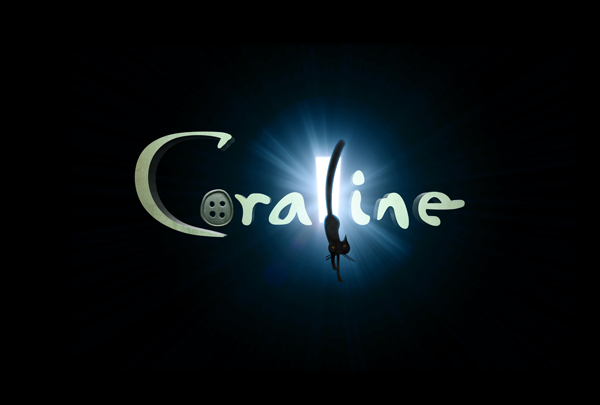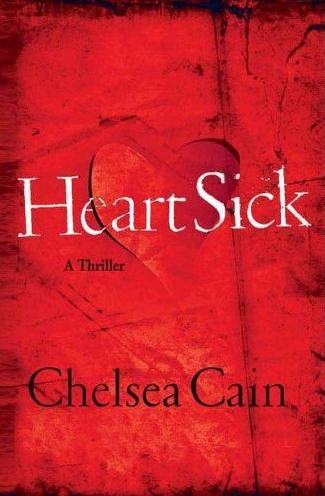 After the dust settles, the tsunami recedes or the cookie crumbles, depending on your metaphor of choice for our present economic condition, who will be left standing? More specifically, what regions of the country can expect to rebound quickly and which ones are headed for even deeper trouble?
After the dust settles, the tsunami recedes or the cookie crumbles, depending on your metaphor of choice for our present economic condition, who will be left standing? More specifically, what regions of the country can expect to rebound quickly and which ones are headed for even deeper trouble?
That’s the provocative topic of Richard Florida’s Atlantic Monthly essay this month, which is the starting point for my column in this Monday’s newspaper. It’s long (Florida’s article, not my column!). And it contains some predictions of doom for certain cities and states that must give them pause. For the record, he expects the Pacific Northwest, from Vancouver, B.C., to Eugene, to do just fine — he jumped on our bandwagon in his book “The Rise of the Creative Class” way back in 2002, after all. He doesn’t think the same for Phoenix, Cleveland and Detroit.
Early in that article, Florida mentions Elizabeth Currid’s book, “The Warhol Economy,” as he explains why he thinks New York City, even though the hit it has taken from the collapse of the financial sector is massive, will continue to thrive. Currid, who teaches at USC, did a “case study” of the creative class in New York, specifically the music, fashion and art scenes, and found that these interwoven “industries” were 1) far more important to the city’s economic health than commonly understood, and 2) when linked to the national media outlets and the rest of the city’s creative economy of designers, theater, and the other arts, were absolutely crucial to the city’s identity as an international center.
Currid’s book does more than map the contours of this economy, though. It also examines how they feed each other in myriad ways as the members slosh around the city’s clubs and fashion shows and galleries. The casual encounter can lead to very big things for the individuals involved, Currid demonstrates.
This all has to do with some of the special features of New York, of course. Densely populated with artists and designers who live and work in neighborhoods easy to walk around, New York is the perfect example of the city that urbanist Jane Jacobs has worked since the 1950s to create and idealize, the densely packed city open to new ideas and newcomers, mixing them willy-nilly until they produce something new and amazing. New York is gigantic, the cultural center of the country (though sometimes I can be persuaded it’s LA, I suppose), and it contains a vast media apparatus to broadcast those new and amazing things. But it often starts, Currid suggests, when a hip-hop choreographer runs into a fashion designer at a hot club in a very specific club in a cool part of town.
 This is all a very long lead-in to what I’ve been thinking about this week. Doesn’t Portland have a form of the Warhol Economy, too? We don’t have Warhol himself, of course (neither does New York, I guess), but we do have creative people in a cluster of cultural and design businesses who run into each other at our own clubs, restaurants, coffeehouses, lectures and events. They run into each other, they make connections and often they end up doing business with each other, one way or another.
This is all a very long lead-in to what I’ve been thinking about this week. Doesn’t Portland have a form of the Warhol Economy, too? We don’t have Warhol himself, of course (neither does New York, I guess), but we do have creative people in a cluster of cultural and design businesses who run into each other at our own clubs, restaurants, coffeehouses, lectures and events. They run into each other, they make connections and often they end up doing business with each other, one way or another.
What would our areas of concentration be? My list might include visual artists, architects, the wide range of designers in town (shoes, clothing, graphics, industrial products, etc.), the comics business, music of all sorts, advertising and branding, animation and film, food and drink. In all of these, we’ve developed a national reputation that has helped make Portland the poster child for the creative city — at least in America.
Not the Warhol Economy, exactly, but something. And when I called up economist Joe Cortright to check on my thinking, he gave me the name I was looking for. The Coraline Economy. Perfect! It comes off the successful Laika animated film and it’s a little tongue-in-cheek. So, for the past 30 years or so, since the corroding recession of the early 1980s kneecapped the timber and other resource-based industries here, we’ve been working at developing the Coraline Economy.
The city might have thought it was constructing the quintessential “Livable City,” with nice neighborhoods, fashionable urban living experiments, an Urban Growth Boundary and extensive mass transit system. But maybe what we were really doing was preparing for the Economic Crunch. Because the city we created (and lucked into — our lagging real estate prices lowered the bar for entry into the creative economy here, compared to Seattle, San Francisco or LA, for example), also happened to attract and keep the young creative class that Florida was so interested in.
Again, not like the scale of New York, but as Cortright pointed out, that just means that “any given job here is 10 times more important” than the same job in New York. And I understood what he meant. A gallery closes in New York City, and it’s no big deal. But in Portland, we get depressed when a gallery like Quality Pictures closes up shop. The scene is demonstrably diminished; our access to the curatorial work of gallery owner Erik Schneider halted. (I also like the idea that I’m 10 times more important than those dime-a-dozen cultural journalists in New York, you know, the ones with the Pulitzer Prizes, enormous expense accounts and big book contracts!)
Cortright also agreed with me that in a way, the Crunch is a test of the ideas of Jacobs, Florida and Currid. And of Portland, and its embrace of those ideas (altogether conscious or not)
 The idea that our futures are in the hands of coffeehouse conspirators can be a little scary. We’re not talking the manly enterprise of chopping and milling wood here. Or the brainy enterprise of piling transistors onto chips using the latest nano-technology. Not at all.
The idea that our futures are in the hands of coffeehouse conspirators can be a little scary. We’re not talking the manly enterprise of chopping and milling wood here. Or the brainy enterprise of piling transistors onto chips using the latest nano-technology. Not at all.
Wednesday night, I spent some time listening to Minneapolis-based graphic designer Charles S. Anderson, who has created a little empire of note cards, wrapping paper, buttons, pins and even books that explore the boundary between “the cute and the creepy” as one writer he quoted put it. Sometimes its not so much on the boundary. I’m thinking about certain explicit pages in “The Fluffy Humpy Poopy Puppy” book, for example. Are we really in the hands of people like Anderson, who seems never to have met a bad pun that he didn’t try to turn into a product of some sort? I’m afraid so. Though fortunately, if the public appetite for kitties and butterflies and flowers is finally whetted, then the nature of creative businesses is that there will be others to step in. Probably even Anderson, who struck me as off-beat, sure, but an entrepreneur down to his… well, see where an hour in his company leads? Right to the outhouse.
Here’s another disturbing image, this one from Ethan Seltzer, who heads PSU’s school of urban planning and design, describing the Crunch: “”It’s kinda like one of those weird science fiction stories where everyone has disappeared and you’ve only got the people around you as resources.” I’m thinking “Aliens” here, I suppose, and I’m looking at Anderson and thinking that we’re in big trouble. But what Seltzer means is that we’ve been left to our own devices here. We may get some stimulus help, but it’s boot-strap time, for the most part. Intel won’t get us out of this by itself, no matter how well it’s positioned when the turn-around does finally happen (which it is, I’m starting to think). No, we have to live by our wits, by our creativity. There’s really not much else to rely on. Talk about scary.
I liked Seltzer’s specific suggestions, which all revolved around the idea of making sure that our best ideas and techniques and technologies are in constant circulation. He mentioned the Open University idea, for example. “There’s more we can do to get them engaged with each other and generating new ideas.” he said. And I thought of Randy Gragg’s Bright City Lights series at Jimmy Mak’s and the numerous lectures at our museums and colleges, more now then ever, it seems. Seltzer’s practically Utopian goal? “To link the artists and designers with the machinists and the woodworkers.” In other words, Total Creative Mobilization.
 Will we miss the worst of the Crunch (as I’ve clearly taken to calling it)? I personally don’t think that’s possible. Will we “return to normal”? I like what Cortright said about that and used it in my column: “Economists tend to give us the wrong words. They talk about ‘recession and recovery,’ and that’s not literally true. Many of the jobs that are lost will not come back,” he said. We will have to create new ones. Figure out an edge somehow, a tweak or a brand new idea, using only the resources at hand and our ability to figure out what customers really need and want.
Will we miss the worst of the Crunch (as I’ve clearly taken to calling it)? I personally don’t think that’s possible. Will we “return to normal”? I like what Cortright said about that and used it in my column: “Economists tend to give us the wrong words. They talk about ‘recession and recovery,’ and that’s not literally true. Many of the jobs that are lost will not come back,” he said. We will have to create new ones. Figure out an edge somehow, a tweak or a brand new idea, using only the resources at hand and our ability to figure out what customers really need and want.
We’ve actually gotten pretty good at that — our creative class succeeds in the world, not just in Portland and Oregon. And not just “Coraline,” the amazing 3-D animated film by stop-action genius Henry Selick. From Dark Horse comics to Chelsea Cain, construing the next chapter in her serial killer trilogy, we have played with the big boys and won.
And so, I have to admit, I believe in the Theory, too, that the well-designed (and at the same time messy) city teeming with creative people eager to reinvent the world is more resilient than other places. We won’t avoid pain in this recession that’s looking more like a Depression every day. Given the business I’m in, I certainly don’t expect to avoid it. But I still want to see if the theory holds. Somehow that would make me feel better about it all.